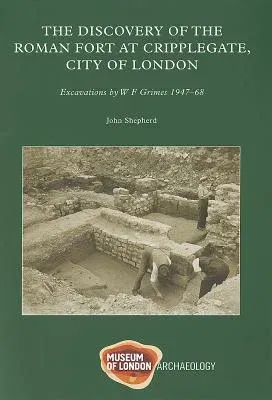When Grimes received a CBE for the discovery of the Temple of Mithras,
he remarked that he was proud but wished that it had been in recognition
for his work at Cripplegate - the discovery of the Mithraeum was "a
fluke". His initial objective at Cripplegate was to understand more
about the dating sequence of the city's defences. He soon discovered
that the outline of the walls there represented the location of a
2nd-century fort. Over a 15-year period the piecing together of the main
sequence of the Cripplegate fort required detailed research and also
in-depth negotiations with a large number of property owners. The result
of this work significantly enhanced our understanding of the Roman city
of Londinium. The fort was constructed in the first two decades of the
2nd century - probably in the early Hadrianic period. There is evidence
of earlier occupation in the area, but nothing that suggests a precursor
to the 2nd-century military phase. By c.AD 200 the fort had been
incorporated into the city defences and would appear to have gone out of
use then or soon after. Thereafter, the area was very sparsely
occupied - it might well have been open ground until the end of the
Roman period. This report gathers together the results of Grimes's work
and presents them as an account of this work. The politics of the
discovery are also considered, concerns about the discovery of the fort
gate, following on from the Mithraeum affair, also attracting attention
in Parliament.

